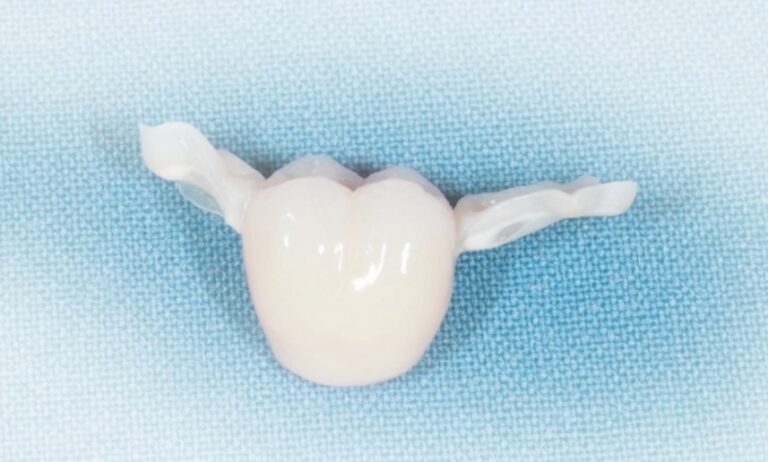In recent years, weight loss medications like Ozempic (semaglutide) have gained significant attention for their ability to help individuals shed excess pounds. However, as the popularity of Ozempic rises, so does the discussion around a curious side effect known as “plastic surgeons ozempic face.” Patients and plastic surgeons are now addressing the aesthetic changes associated with rapid weight loss, particularly in the face. In this article, we delve into what Ozempic Face is, why it occurs, and the cosmetic treatments available to counter its effects.
What is Ozempic?
Ozempic (semaglutide) is an injectable medication initially developed to treat type 2 diabetes. It belongs to a class of drugs known as GLP-1 receptor agonists, which help regulate blood sugar levels by mimicking a hormone called glucagon-like peptide-1. One of its secondary effects is appetite suppression, which often leads to significant weight loss. Due to this side benefit, the medication has become widely prescribed off-label for weight management.
How Does Ozempic Promote Weight Loss?
- Appetite suppression: Ozempic signals the brain to reduce hunger, making it easier for users to eat less.
- Slows digestion: The drug delays gastric emptying, keeping individuals feeling fuller for longer.
- Improved insulin sensitivity: It enhances how the body uses insulin, which helps in better glucose control and fat metabolism.
What is Ozempic Face?
Ozempic Face is a term coined by plastic surgeons and dermatologists to describe the facial changes observed in patients who have experienced rapid or significant weight loss due to medications like Ozempic. As body fat decreases, the face can lose its volume and elasticity, leading to a gaunt or aged appearance.
Key Characteristics of Ozempic Face:
- Hollowed cheeks and temples
- Sagging or droopy skin, particularly around the jawline and under the eyes
- Fine lines and wrinkles becoming more pronounced
- Loss of skin elasticity and volume
While these changes are not harmful from a medical standpoint, they can be distressing for patients concerned about their appearance.
Why Does Ozempic Face Occur?
The primary reason behind Ozempic Face is rapid fat loss. Here’s a closer look at the contributing factors:
1. Fat Loss in the Face
Fat acts as a natural cushion beneath the skin, providing a youthful and plump appearance. When a person loses weight rapidly, facial fat diminishes, causing the skin to sag and features to appear more angular or hollow.
2. Reduced Collagen Production
Collagen is a protein responsible for skin elasticity and firmness. Weight loss, combined with the natural aging process, can lead to a decline in collagen production, exacerbating the appearance of loose skin.
3. Dehydration and Loss of Muscle Tone
Some weight loss medications can lead to dehydration, further reducing skin plumpness. Additionally, muscle mass may decrease alongside fat loss, contributing to a less defined facial structure.
4. Age as a Factor
Patients over 40 are more likely to experience pronounced facial changes, as the skin naturally loses elasticity with age.
The Psychological Impact of Ozempic Face
For many individuals, achieving weight loss is a significant accomplishment that improves their overall health and well-being. However, the onset of Ozempic Face can have psychological effects, including:
- Self-consciousness: Patients may feel less confident about their appearance.
- Body image concerns: Rapid changes can lead to dissatisfaction with one’s body, even after weight loss.
- Anxiety about aging: The appearance of wrinkles and sagging skin may cause anxiety about looking older.
Plastic surgeons and dermatologists play a crucial role in addressing these concerns by offering a range of treatment options.
Treatment Options for Ozempic Face
Fortunately, several cosmetic procedures can help restore facial volume and improve skin elasticity. Here are some of the most commonly recommended treatments:
1. Dermal Fillers
- Purpose: Restore lost volume in the cheeks, temples, and under the eyes.
- Procedure: Injectable fillers, often made of hyaluronic acid, are strategically placed to plump and lift the skin.
- Results: Immediate improvement with minimal downtime.
2. Fat Transfer (Fat Grafting)
- Purpose: Permanently restore facial volume using the patient’s own fat.
- Procedure: Fat is harvested from another part of the body (e.g., abdomen or thighs) and injected into areas of the face that have lost volume.
- Results: Natural-looking, long-lasting outcomes.
3. Collagen-Stimulating Treatments
- Purpose: Boost collagen production to improve skin elasticity and firmness.
- Options: Microneedling, radiofrequency treatments, and platelet-rich plasma (PRP) therapy are commonly used to stimulate collagen.
- Results: Gradual improvement over several weeks to months.
4. Thread Lifts
- Purpose: Provide a non-surgical lift to sagging areas of the face.
- Procedure: Biodegradable threads are inserted under the skin to lift and tighten problem areas.
- Results: Immediate lifting effect with continued improvement as collagen production increases.
5. Facelifts
- Purpose: Correct significant sagging and loss of definition in the face and jawline.
- Procedure: A surgical procedure where excess skin is removed, and underlying tissues are tightened.
- Results: Long-lasting and dramatic improvement, but requires recovery time.
6. Skin Tightening Procedures
- Purpose: Improve skin firmness without invasive surgery.
- Options: Laser treatments, ultrasound therapy (e.g., Ultherapy), and radiofrequency devices (e.g., Thermage) are effective for tightening loose skin.
- Results: Visible improvements with minimal downtime.
Preventing Ozempic Face: Proactive Measures
While some facial changes are inevitable with significant weight loss, taking proactive measures can help minimize their severity:
1. Gradual Weight Loss
- Losing weight slowly allows the skin to adjust gradually, reducing the likelihood of sagging.
2. Stay Hydrated
- Proper hydration supports skin elasticity and overall skin health.
3. Maintain Muscle Mass
- Incorporate strength training exercises to preserve muscle tone, which helps maintain facial structure.
4. Skincare Routine
- Use products that promote collagen production, such as retinoids and vitamin C serums.
5. Nutritional Support
- Ensure adequate intake of vitamins, minerals, and protein to support skin health.
What Plastic Surgeons Are Saying
Leading plastic surgeons acknowledge that Ozempic Face is a genuine concern for many patients but emphasize that it is manageable with the right interventions.
Dr. Jane Smith, Board-Certified Plastic Surgeon:
“Patients often come to us feeling conflicted—they are thrilled about their weight loss but worried about the changes in their face. The good news is that we have a variety of minimally invasive treatments that can help them regain a youthful appearance.”
Dr. Michael Johnson, Cosmetic Dermatologist:
“Ozempic Face highlights the importance of holistic weight management. Patients should consider combining weight loss efforts with skin and muscle maintenance to achieve the best overall results.”
The Future of Weight Loss and Aesthetic Treatments
As medications like Ozempic become more widely used for weight management, the demand for complementary aesthetic treatments is expected to grow. Innovations in non-surgical procedures, combined with personalized treatment plans, will likely play a crucial role in addressing cosmetic concerns associated with rapid weight loss.
Additionally, future research may focus on developing weight loss medications that minimize facial volume loss or improve skin elasticity as a side benefit.
Conclusion
Plastic surgeons ozempic face is a common and manageable side effect of rapid weight loss induced by medications like Ozempic. While the physical changes can be concerning, a range of effective treatments is available to restore facial volume and rejuvenate the skin. By working with experienced plastic surgeons and dermatologists, individuals can address their aesthetic concerns and enjoy the full benefits of their weight loss journey.
Taking a proactive approach, including gradual weight loss, proper hydration, and maintaining muscle mass, can help minimize the occurrence of Ozempic Face. As the field of aesthetic medicine continues to evolve, patients will have even more options to maintain their youthful appearance.
FAQs
1. What is Ozempic Face?
Ozempic Face refers to the loss of facial volume and sagging skin that can occur as a result of rapid weight loss.
2. Can Ozempic Face be reversed?
Yes, cosmetic treatments such as dermal fillers, fat transfer, and skin-tightening procedures can help reverse the effects of Ozempic Face.
3. Is Ozempic Face common?
It is relatively common among individuals who experience significant weight loss, particularly those over the age of 40.
4. How can I prevent Ozempic Face?
Gradual weight loss, staying hydrated, maintaining muscle mass, and using skincare products that promote collagen production can help minimize the effects.
5. Are there any risks associated with treating Ozempic Face?
Most treatments are safe when performed by qualified professionals, but some procedures may involve risks such as bruising, swelling, or infection.
6. Should I stop using Ozempic if I notice facial changes?
Consult your healthcare provider before making any changes to your medication. Cosmetic concerns can often be managed with non-invasive treatments without stopping the medication.







